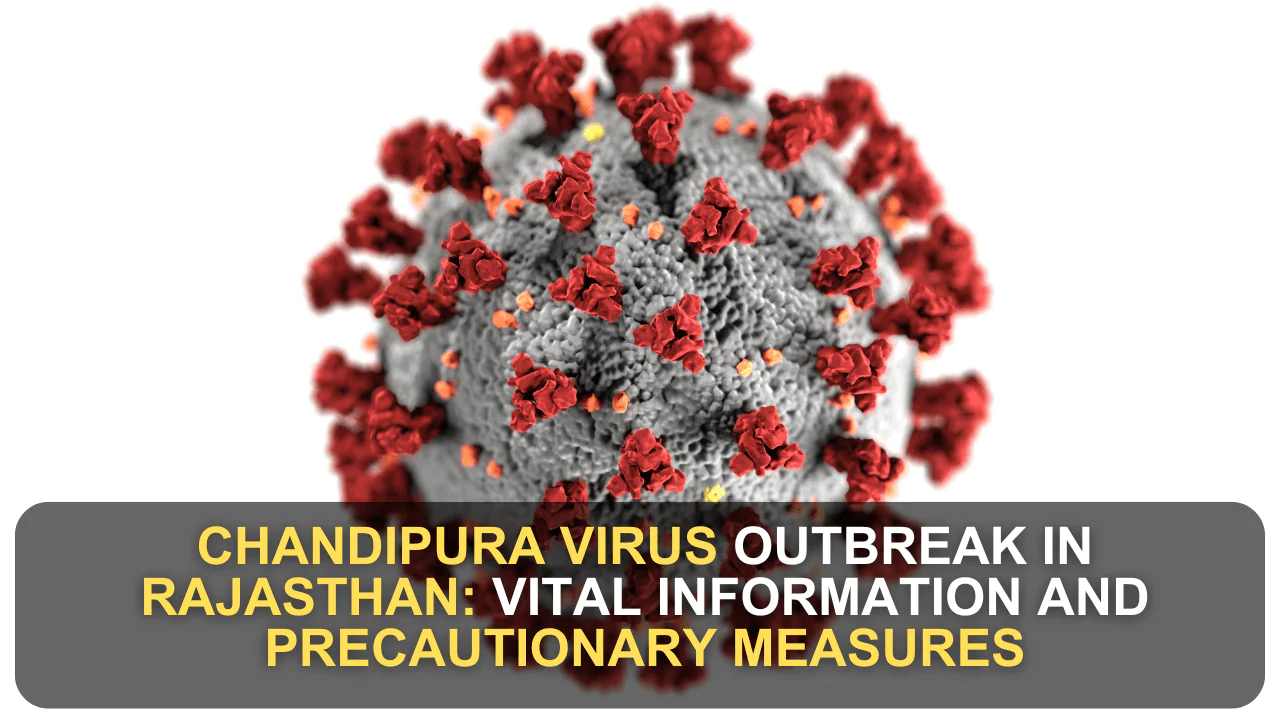With the help of this Biography, it is seen that the Chandipura virus is on the rampage in India, and this has caused various health officials to begin to sit up. The latest health fear that has caught the nation’s attention emerged in Gujarat with a record rising figure to 51; Rajasthan also has its first situation of this viral infection.
Many measures were suggested to be adopted after a Chandipura virus-infected patient was identified in the Dungarpur district by the Rajasthan Medical and Health Department on Tuesday as a part of its elaborate advisory on Chandipura virus containing all-around preventive and necessary management guidelines. Medical and Health Minister, Gajendra Singh Khinvsar has called on the authorities to take adequate measures to curb the virus’s spreading. The advisory has directed all the principals of medical colleges, chief medical and health officers, and the chief medical officer to observe the guidelines strictly.
CHPV is a rhabdovirus, specifically a member of the Vesiculovirus genus first discovered in India in 1965.
“Chandipura virus mainly targets children below the age of 15 years, and these affected diseases hit mostly in rural and semi-urban areas The researchers said that since this virus was identified, several outbreaks have been recorded in Andhra Pradesh, Gujarat, and Maharashtra To this virus, children are the most vulnerable, and severe outbreak may lead to up to 70% mortality as noted in some of the affected areas This situation calls for early identification of the
The symptoms arising out of Chandipura virus infection are quite serious and manifest in a clinical form. The incubation is usually more of short term varying between 24 up to 48 hours, thus being more of a conscious kind. The disease more or less starts like an acute encephalitis where the patients present with high fever, change in the level of consciousness and fits. These signs and symptoms can very quickly progress into encephalitic syndrome, further resulting in coma and death if not administered on time by a doctor.
Spread of the Chandipura Virus
Chandipura virus transmission occurs through the bite of the infected sandfly, mostly the Phlebotomus papatasi species. These sandflies breed in rural and semi-urban centers where most of these outbreaks are experienced. However, it has been reported that although transmission is possible from one person to another, it is quite limited. This results in the increased rate of the spread of the virus within a community because of the density of vectors and concentration of human habitations within the affected areas. These factors are not very healthy and need immediate attention, cautions Dr. Verma.
Prompt diagnosis of Chandipura virus is advised given the fact that its outcomes can be fatal. However, it is reported that the early manifestations are rather vague, and this is a major problem The first signs of the illness are not very precise, and this is the weakest point. Routine diagnosis in the laboratories often involves more stringent tests such as reverse transcription-polymerase chain reaction (RT-PCR) where viral RNA is detected in clinical specimens. The disease progresses fast thus the need for early diagnosis to provide the necessary treatment and control measures.
Aversive Steps and Health Alert
The following are the precautionary measures recommended by the Rajasthan Medical and Health Department to fight against the Chandipura virus. These include:
- Consequently, education on the virus, how it spreads, and the symptoms associated with it was conducted.
- Promoting the use of mosquito nets, and insect repellents so that people avoid exposure to sandflies.
- This includes the spraying of insecticides and pesticides to rid the affected environment of the disease-carrying insects.
- Vest the measures as early medical check-ups, hospitalization of affected persons, and proper care if symptomatic.
- Improvement measures in the laboratory facilities to ensure early diagnostic handling of presumed cases.
Therefore, due to the continually growing number of such infections, health departments in the concerned region must stay vigilant to implement heavier precautions to stop the transmission of the Chandipura virus. Therefore, this hardly fatal virus can still be contained if the public is informed well and practices the right preventive measures.
To get more details and latest information about the Chandipura virus spread, you can log on to adityasinghtharran.com.




